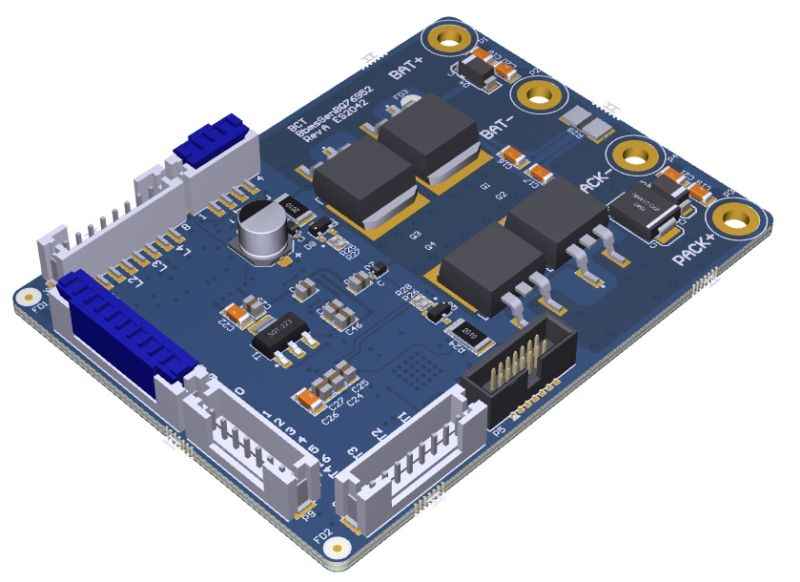Smart BMS for Industriële power applications
Smart BMS for Industrial equipment and Power tools
For Industrial application, it is important that the device does not fail unexpectedly. Especially for an UGVUnmanned Ground Vehicles. , AGVAutomated Guided Vehicles or AMRAutonomous Mobile Robots. you don’t want them to fail to reach their loading port in time. If that happens, an entire warehouse may become blocked.
These kinds of problems are caused when the BMS does not properly track how much energy is left, especially when the battery is already somewhat aged. This Smart BMS prevents these problems.
☎ 085-2733462 or 📧 by email at Engineering Spirit

State-of-Charge is important
When applying a BMS for a battery, it is often assumed that any type of battery and any BMS will do.
If you don’t discover the problems until later, the delays and costs are high.
For all applications where the battery provides propulsion, the SoCState of Charge
and
SoHState of Health
are important and
certainly when it comes to unmanned vehicles.
SoC and SoH determination.
The SoCState of Charge
displays the percentage of residual energy in the battery. This percentage is
determined relative to the energy after full charge (100% charge). As the battery ages, the 100% charge decreases.
The ratio of the energy of 100% charge, compared to the specified charge is the SoHState of Health
.
Therefore, to determine how long you can continue with the residual energy, the SoH must also be known.
Therefore, it is essential for a vehicle BMS to be able to determine both the SoC and SoH.
The drama of an incorrect SoC and SoH.
If the SoC and/or the SoH are not properly calculated by the BMS, the indication of the residual energy will deviate. The decision to return or start charging is then not made at the right time.
Then there are 2 possibilities:
- The battery is far from empty, but still the system decides to start charging (considerable loss of time).
- The battery is empty before the system decides to start charging. Then the vehicle comes to a standstill, with possible chain effects due to blockage of passages (even more time is lost).
Which BMS is suitable
The Smart BMS has all the necessary facilities on board:
- Advanced determination of SoC and SoH.
- All required safety functions.
- Test facilities during production and during operation.
- Lifetime extension function.
In addition to this compact version, a Smart Power BMS version is available for more demanding systems up to 100A.

Read more about this in the white paper: Also read about the Lithium Battery Management Systeem for your equipment.
**Smart BMS features in brief
- BMS for Industrial Equipment and Power tools (67V 17Amp)
- Available 24 - 67V (7 - 16S) versions
- CAN communication
- Readable Event log for warranty claim review
- Accurate SoC and SoH determination
- Accurate cell balancing
- Firmware update facility
- 100% Configurable
- Function test after installation
- Lifespan doubled by 80% charging
- Automatic hibernation that extends life and prevents deep discharge
- Compatible with UN38.3 EN15194 and IEC 62133-2:2017.
The benefit of a Smart BMS for devices
- Accurate SoC and SoH determination
- Support on the BMS from the Netherlands
- Configurable for the specific battery type
- High reliability
- Functional test after installation
- Easy to integrate
- Service parts remain available

